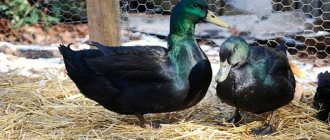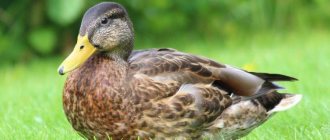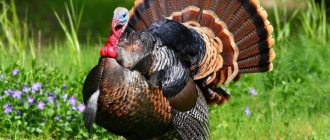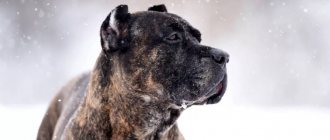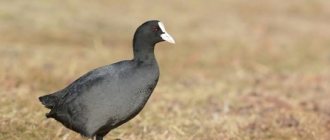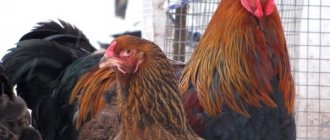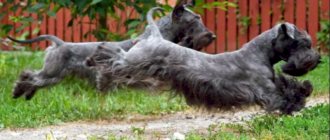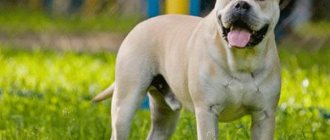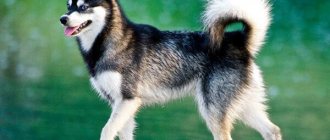The Indian Runner duck is an interesting bird. In a private farmstead it can be kept as a meat and egg plant, but it is most in demand and loved by poultry farmers as a decorative one.
Our readers will be interested to learn about this useful and beautiful breed, to get acquainted with its characteristics, specific breeding and care.
“Indian runners” (pictured) are ducks with a very recognizable specific appearance
Content
Indian ducks are unpretentious birds and adapt well to environmental conditions.
They are able to withstand the cold winter of the Russian climate in a cold poultry house. But egg production in such conditions is reduced by half. To achieve high performance results, a runner must adhere to proper care. To keep ducks you need:
- a room equipped with heating and lighting;
- the presence of a reservoir - artificial or natural;
- walking area with grass with an area of 10 sq.m per bird.
With short daylight hours in winter, it is necessary to extend the lighting in the coop up to 14 hours a day. Ducks need bathing to clean their feathers; when the birds' plumage becomes dirty, their productivity decreases and the likelihood of various diseases increases. Walking is also necessary for runners, as they feed on pasture (snails, insects, worms, seeds, etc.). During the period when birds are grazing on the range, it is enough to feed them once a day.
Poultry house
When choosing a room for raising runner ducks, you must take into account that there should be no more than 6-8 birds per 1 square meter. A denser population of ducks will result in decreased productivity. There should be dry bedding on the floor of the poultry house. In the autumn-winter period, with short daylight hours, artificial lighting is necessary. Ducks should have at least 12 hours of daylight. It is necessary to take care of heating the room for the winter period. Birds tolerate cold weather well, but at the same time begin to lay eggs less.
Access to water
One of the main conditions for keeping ducks is the presence of a natural or artificial pool. Indian runners are very fond of water treatments. In summer, birds spend a lot of time in the water, where they also get food. The absence of a water pool negatively affects the egg production of ducks.
Feeding
Taking care of nutrition for runners is not difficult. In the spring and summer, ducks feed on pasture, and one feeding per day is enough for them.
The food of Indian runners is similar to the food of other ducks:
- dry feed;
- wet mash;
- crushed grains - wheat, barley, corn;
- chopped greens - lettuce, dill, nettle, vegetable tops;
- boiled root vegetables;
- special vitamins and minerals for ducks.
From time to time, small shell rock, chalk, crushed egg shells, and sand are added to the food. If the birds do not have a place to walk, and also in winter, they are fed 4 times a day.
During the summer
In the summer, if the birds are not kept indoors, feeding is based on the birds independently obtaining food. Birds eat grass, snails, larvae, seeds, and worms. The ducks are fed once in the evening with crushed grains. The diet should include (per one duck):
- boiled potatoes – 30 g;
- carrots – 20 g;
- bone meal – 10 g;
- legume flour – 10 g;
- bran – 25 g;
- grain flour – 130 g;
- greens - no restrictions.
In winter
In winter, special attention should be paid to the nutrition of ducks. An Indian runner's diet should be enriched with vitamins and minerals
The menu should include:
- special combined feeds;
- crushed grains - wheat, barley, corn;
- wet mash;
- bone flour;
- boiled vegetables, bran;
- small shell rock, sand.
The productivity of birds depends on the quality of nutrition.
Feeding
Indian runner ducks are fed with feed, wet mash, grain
It is important to give oats - the main source of vegetable fat, barley and millet, rich in proteins, greens, peas, fruit and vegetable waste, mineral and vitamin complexes, boiled potatoes, carrots, beets. To increase egg production, birds are given crushed shells, chalk and shell rock.
In winter, during the reproductive period and when raised in an aviary, birds are fed 4 times a day. In summer, spring and autumn, when walking birds, they are fed with grain.
During the first days, runner ducklings eat boiled yolks and whites. From day 4, grain soaked in water is added to the menu.
Types of Indian Runners
This breed of ducks has several varieties that differ in plumage color. Mostly brown feathers are found, the most rare are ash-red ones. This type is for exhibition. In general, the main features of beauty are considered to be a plump tummy, a small neck and a long tail. The colors of birds are incredibly diverse.
Silver Indian Runners
There are several types of duck colors:
- Wild. The head and neck are emerald, the breast is brick red with a white ring on the neck. The tail is black with greenish speckles, the beak is pure green. The wings are chocolate, the beak is yellow.
- Trout. The duck looks like this: the breast is red, the back is dark, the wings are gray, the neck is green with a white ring, the feathers are brownish, the beak is bright yellow.
- Silvery wild. The head has a bright black color, shimmering with emerald. The breast is brown-red, rich, the belly is silver, the wings are white, the feathers are yellowish, the beak is green.
- White. Ducks of both sexes are white with a lemon-colored beak.
- Black. The feathers are rich black, shimmering with emerald, and the beak is bright green.
Origin
Ducks were once called penguins due to their appearance. At the beginning of the last century, birds were considered exotic in European countries. Two thousand years ago, runners were bred in the East Indies and are still common in South Asia.
Then they became popular in England, and in 1926 they appeared in Russia. Charles Darwin mentioned in his writings about an unusual breed of ducks. Sometimes Indian runners are used in the production of new breeds of poultry.
Feasibility of reproduction
Due to their exotic appearance, ducks are exhibited at various competitions. But the purpose of breeding is to obtain a valuable product - eggs. Meat is also a valuable dietary product:
- Meat. Although Indian runners weigh a little, they are incredibly tasty, lacking the specific taste of duck. The main advantage of meat is the presence of protein, which is completely free of cholesterol. The product also improves immunity.
- Eggs. Birds are distinguished by extremely high egg production. Their eggs are tasty, contain little fat, and are well absorbed by the body. In one day, a duck can lay 350 eggs. The egg weighs about 80 grams. Their color is most often white, sometimes with a bluish or greenish tint.
This breed produces good chicks, which are born strong and healthy.
Differences in color
Indian Runner ducks are divided into species, which are classified according to the color of their feathers. These birds are taken to exhibitions. Individuals should not be too tall or short, have a plump belly, a short neck, and a long tail.
Based on the color of ducks, the following varieties are distinguished:
- Wild. Drakes are characterized by a black head and an emerald neck, which is girded at the base of the back with a white torn ring. The lower and upper areas of the chest are the color of chocolate. The remaining parts - the abdomen, the upper part of the legs and the tail - are pearl with a mother-of-pearl tint. The lower back and tail are anthracite with a greenish tint. The ashen wings are decorated with a dark blue mirror ringed with black and white stripes. The wings are beige on the inside. The beak is emerald green with a black spot, the legs are bright orange. Females are less bright, their overall color is yellow-brown, and their feathers have a dark horseshoe-shaped marking. The beak is light brown, with a darker color at the tip.
- Silvery wild. The drakes are pearly-cream, the head is black with a green tint. The feathers on the back of the head, lower neck, chest and at the base of the wings are terracotta. The tail is dark chocolate color. The tail is light yellow, the wings are white with a silver tint. The mirror on the wings is edged with a white stripe, bright green. All feathers are edged with a light silver border. The beak is greenish-gray and the legs are orange. Females are milky in color. The top of the breast, base of the neck, back of the head, back and tail are speckled. The lower back is light yellow with grey, speckled. The feathers are edged with a snow-white border. The lower chest area and abdomen are cream. And the mirror on the wings is mother-of-pearl blue.
- Trout. The neck and head of males are emerald green, framed by a non-integral ring at the base of the neck. The breast is brown with small black dots. The wings are gray with a pearlescent tint and a blue-green mirror. The back is darkish with a light gray stripe in front of the rump. The beak is green with a dark tip. Females are brown-pearlescent, with oblong speckles on the back and abdomen. Wing feathers with dark brown edging. The beak is orange with dark speckles.
In monochromatic runners, ducks and drakes have no differences in color.
- white - the legs are bright orange, the beak is deep yellow;
- black – anthracite-colored paws, black-green beak;
- brown - the feather color can have shades from medium brown to dark chocolate, the feathers on the neck, mirror and tail are darker, the beak is grayish-brown, the legs are coffee-colored;
- blue - bright blue color, there may be specks of black, beak - dark gray or light olive with a characteristic dark spot at the end, paws - dark gray or gray-brown.
In addition to these colors, there are pea, yellow-blue varieties of Indian runners and representatives of khaki colors.
How are runner ducks bred?
This process should begin with the design of a proper poultry house with insulation. Ducks of this breed are completely unpretentious to living conditions and easily make contact. Before you begin breeding, you should decide on its purpose: obtaining eggs or new individuals and, based on these options, plan the number of birds in the aviary.
To start, one strong drake and 5 females are suitable, which should be selected in the fall. Eggs that hatch in the spring must be used for subsequent hatching. Future applicants for the title of best Indian runner should be selected based on the weight of the egg and its color. Females of different colors lay eggs at different times: black ducks in winter, and white ducks in summer. The reason for these seasonal preferences has not yet been studied.
Indian runners on the run
The breed is famous for its excellent egg production, which greatly facilitates the breeding process. The main task will be to take care of the ducklings. Female Indian runners are excellent brood hens. From the first days of life, chicks are very energetic and hardy. Males at sexual maturity are so active that they can cover females of other species, so they should be kept separate from other breeds. The offspring obtained from different species of birds will be small, and egg production rates will drop.
When breeding ducks using an incubator, it takes several days to collect the required number of eggs to completely fill it in a small farm. Indian runner eggs should be kept at the proper level of humidity: 70 - 75% and temperature: from 8 to 120C. Eggs can be stored for no more than 8 days.
Prices for egg incubators
Egg incubators
Indian runner eggs in the incubator
If you follow the correct regimen, it will take 1 month for incubation hatching
It is very important that duck eggs have a fertilization rate of up to 88%. This will allow to achieve 70% hatching of young animals
Considering that the yolk contains a lot of fat, you should be especially careful when observing the temperature regime. If the temperature in the incubator exceeds the required level, it will kill the future chicks.
Indian runner eggs in a nest
To prevent this result, you should cool them for 14 days:
- It is recommended to carry out the process of lowering the temperature twice, 12 hours apart;
- during this procedure, all heaters must be turned off;
- you need to open all the doors and provide half an hour of ventilation;
- for the first time, cooling should be carried out, alternating irrigation with air flows, exposing the eggs to a weak solution of potassium permanganate for 15 minutes, then 15 minutes with an air flow. Reduce temperature to 380C;
- close the door after completing all procedures and restart heating and ventilation.
If you adhere to the above rules, the chicks will mature in exactly 1 month. After birth, ducklings immediately begin to rapidly increase in height. The weight of a 2-month-old baby is 1.5 kg.
Indian runners have tasty dietary meat
Productivity
The Indian Runner is an egg breed that attracts breeders with its high production performance. In 1 year, poultry lay up to 360 eggs weighing 70-80 g each. The eggs are tasty, filling, and last longer than those of other poultry yard dwellers.
The color of the shell depends on the color of the Indian Runner, ranging from white to light olive.
When breeding ducks, you can get soft dietary meat with a delicate taste, popular even among true gourmets. An adult carcass weighing 2 kg yields 1.5-1.7 kg of fresh meat. The product is dietary, contains protein without cholesterol, which is excellent for the menu of a person losing weight and is useful for low immunity.
Properties of duck eggs and their use
In India and Asian countries, “Indian runners” are raised mainly as an egg breed, since local cooking for centuries has included duck eggs as an independent element and one of the most important components of many national dishes. Until recently, this product was practically not used in the domestic and European food tradition. Recently, duck eggs have begun to be actively produced in many Western European countries, and they have appeared in retail sales. The reason for the increase in popularity was the following circumstances:
- Duck eggs are larger than chicken eggs, they can be obtained all year round, and the cost of production per unit of product is significantly lower than that for eggs of other types of poultry. In addition, the productive life of a laying duck can last 4-5 years, while hens of egg breeds and crosses in the third year of life, as a rule, already reduce egg laying.
- In terms of nutritional content, omega-3 fatty acids, microelements, choline and vitamins, duck eggs are superior to chicken eggs. Their yolk is relatively larger and the white contains less water. Hard-boiled, they are well suited for salads, and when added to dough, they significantly improve the quality of baked goods. Culinary masterpieces such as soufflés and meringues are also better made with duck proteins.
- Duck egg shells are thick and durable; they are easier to store and transport. True, contrary to the claims of some authors, this does not make the product “less perishable.” Its shelf life is approximately the same as that of chicken eggs. Moreover, according to the requirements of sanitary organizations of European countries, warnings about the need for long-term heat treatment (“cook for at least 10 minutes”) must be placed on packages of duck eggs sold in retail stores.
The only significant obstacle to the widespread consumption of duck eggs can be considered their unusual smell and taste. However, this does not apply to the product obtained from “penguins”. The eggs of “runners” (like their meat) are free from this drawback. In taste and aroma they are almost no different from chicken eggs.
The breed is very popular among poultry farmers in different countries.
Indian Runner ducks are productive and unpretentious. Keeping and feeding such pets is easy and relatively inexpensive. In addition, they completely pass on their economic and decorative qualities to their offspring. The initial purchase of hatching eggs or purebred young animals, as a rule, requires serious expenses, but then the breed is successfully bred “in itself,” which significantly reduces costs. The bird produces high quality meat and eggs. We can consider that “runners” are quite worthy of the attention of summer residents and owners of rural farmsteads.
Characteristic
Indian Runner is a precocious egg breed ; these ducks have a number of advantages and disadvantages.
Advantages
The undoubted advantages are:
- high egg production;
- ease of care;
- calm, self-possessed character;
- exotic appearance;
- good contact with other birds.
In the absence of a reservoir, the productivity of birds does not decrease.
Flaws
Among the shortcomings we can only highlight some timidity and not very heavy weight . Due to their low weight category, they cannot be classified as universal breeds that combine the best qualities of meat breeds and egg varieties.
However, high egg production compensates for this disadvantage.
Description of the breed, appearance and photographs
The Indian Runner is one of the four oldest breeds of domestic ducks. They have been bred in Southeast Asia for more than two thousand years.
Ducks came to Europe at the beginning of the 19th century, brought on ships of the East India Company, and to the Soviet Union only in 1926. In those days they were called penguin ducks or penguins (Penguin Duck). They say that Charles Darwin himself gave them the name. Later, the official designation of the breed appeared - Indian Runner.
In Soviet agriculture, runners were occasionally used to increase egg production when new breeds were bred. However, since the early 90s of the last century, the demand for egg-laying ducks has increased, and the number of purebred runners began to increase.
The appearance of the runners is unusual.
The approved standard lists the following characteristic features of their exterior:
- Cylindrical body of a narrow, vertically elongated format. Because runners resemble wine containers, they are sometimes called “running bottles.”
- The eyes are located vertically above the tips of the paws. Color ranges from nut brown to dark brown.
- The frontal bone is flat, the occipital bone is curved. The cheeks don't sag.
- Posture is upright and slender.
- The chest and sides are rounded.
- The abdomen looks like a tulip. Smooth, voluminous, does not protrude forward.
- The back is convex.
- A small head with a wedge-shaped beak, its length approximately equal to the length of the head.
- The neck is long, thin, raised upward. The proportional ratio of neck length to body length is 1:3.
- The limbs with long visible shins and orange paws are set in a “penguin-like” manner.
- Dense wings are pressed to the body.
- The short, wedge-shaped, slightly upturned tail of 18 tail feathers of the falling type (abfallend) does not reach the ground.
Productivity of Indian runners
Despite constant attempts to breed ducks with the best performance, Indian runners, in terms of production characteristics, occupy a leading place among the few breeds of egg-laying ducks.
They have excellent performance:
- egg production depends on the conditions of detention and varies from 150 to 360 eggs;
- egg weight from 68 g to 80 g;
- ducks are able to lay eggs at the age of 5-6 months;
- live weight of the drake - 1.8-2.0 kg;
- ducks - 1.7-1.8 kg;
- two-month-old ducklings - 1.2-1.5 kg;
- to produce a dozen eggs, 3.08 feed units are required, per 1 kg of weight gain - 4.5.
Origin story
Unfortunately, it is not known exactly where and when representatives of this breed appeared, but some scientists consider Indian runners to be one of the most ancient breeds of domestic ducks bred in India. It is quite possible that penguin ducks were among their ancestors, but this fact has not been definitely proven. The only thing we can talk about with greater confidence is the time at which the birds entered European territory.
Did you know? Duck feet have no blood vessels or nerve endings. This is why birds can swim in icy water without freezing their paws.
For example, they were brought to England in the 18th century, and a hundred years later Indian birds came to Germany. They began to be bred in Russia in the 20s of the twentieth century, where they are still found today in many private farmsteads.
Breeds of meat-oriented ducks
Duck breeds of this type can often be found in households. Gourmets believe that their meat is juicier and more tender. And the ducks themselves are quite prolific and grow very quickly. It is known that their viability is high, but their egg production is average.
The most popular meat breeds are the following types of ducks:
- Beijing.
- White Moscow.
- Ukrainian gray.
- Black white breasted.
- Agidel.
- Rouen.
- Bashkir color.
- Swedish blue.
- Favorite blue.
Of all the meat breeds, Peking duck is the most common. Representatives of this species differ from other individuals by their wide and slightly long head, which ends in a bright orange beak. A duck of this breed usually has white plumage. It is easy to feed such duck offspring, as they grow quickly and gain weight, are quite hardy and are not afraid of winter cold. Thus, a young individual already at 2 months has a body weight of 2500 grams, and the weight of an adult male can reach up to 4 thousand grams. They produce few eggs per year: approximately 85–90 eggs. One egg of such a duck weighs approximately 90 grams.
The Moscow white breed of ducks appeared after crossing the Peking species with Khaki Campbell individuals. Already at 65 days of birth, a young duck of this breed weighs more than 2 kilograms. If such a duck is properly kept, then in a year you can take up to 120 eggs from each individual.
The black white-breasted breed appeared as a result of crossing Peking, black and Ukrainian ducks. Black white-chested have a wide and long back, which is slightly inclined towards the tail. The chest is deep, and the body itself is slightly elevated.
Meat broilers include Agidel ducks. They can be grown indoors and in open pastures. This breed was the result of crossing such breeds as Super M, Indian Runner and Blagovarskaya.
The Rouen breed was developed in France. The massive body goes well with the calm character. The head of such individuals is dark brown, the body itself is light brown, and the limbs are dark orange. If it is a male, then the plumage in the head area will be shiny and even slightly green. The weight of the female reaches 3 kilograms, and the male – 4 kilograms. Egg production – 90 pieces per year.
At the Blagovarsky breeding plant such a breed of colored ducks as the Bashkir was bred. For this purpose, mutant individuals of the Peking duck were used. They easily adapt to any living conditions. Their carcass is not as fatty as other meat varieties.
meat breed
Having silvery-white plumage, a duck of this breed weighs approximately 3–4 kilograms. The head of individuals is long and slightly oval. The beak is flat with a yellow-green color, although its tip is black. The back is quite wide and long, without any protrusions, but the tail is straight and short. The wings are long, usually tightly pressed to the sides. The legs are orange in color.
By the long body of the duck, you can also guess the breed of the Favorite blue meat category, which owes its origin to the Blagovarsky breeding plant. Individuals of this breed have a large build and gray-blue plumage. The duck grows quickly and does not require special care. Unlike other meat breeds, for example, Bashkir or Peking, the meat of an individual of this species is lean and has good taste. By the way, this duck is also famous for its high egg production.
Young duck offspring have high vitality. In 2 months of life, such a duck can gain from 2.5 to 3.5 kilograms. An adult drake is much larger than a female and weighs from 4 to 5.5 kilograms. But the female weighs 3–4 kilograms. Egg production is 140 eggs per year, and the weight of one egg is 85 grams.
All meat breeds have their own characteristic features. For example, large body mass and huge size. Keeping such ducks is also profitable because they are very prolific. Thus, it is known that one duck laying hen can produce about 50 heads of its offspring in a year.
If you correctly structure the feeding diet for such ducks, and also make sure that the conditions for keeping them are good, then after 1.5-2 months these ducks will weigh 3 kilograms, and they can already be slaughtered for meat. By the way, breeding ducks for meat production is profitable and does not require large financial expenditures.
Diseases
Indian Runners have good health and strong immunity. The breed has no specific diseases, but you should beware of pathologies common to all inhabitants of the poultry yard:
- Vitamin deficiency . If there are feeding errors, ducks receive an insufficient amount of vitamins, minerals, and microelements. Possible complications include rickets, feather loss, apathy, lack of appetite and weight loss.
- Cuticulitis . Chicks under 1 month of age are at risk. The disease is accompanied by loose stools, loss of appetite, and slight weight gain. Poultry may even die from exhaustion.
- Cloacite . The duck's cloaca becomes inflamed and a growth with purulent contents forms. Potential causes include a lack of vitamins in the diet. The consequences are the death of young animals.
- Urov disease . This is a consequence of feeding errors, in which birds begin to pluck their feathers and eat sawdust. Potential complications include cannibalism.
Preparing the bird for laying
Most domestic ducks are unpretentious in everyday life. All they need for comfort and productivity is tranquility, a warm, dry climate, a balanced menu and regular meals. Ducks fly only in a cozy and safe place.
Another important factor is having a cozy nest for the duck when she is ready to lay eggs. You will find detailed instructions for its construction in the article “Making a nest for Indian ducks with your own hands.”
Plan construction for the fall or winter month so that by spring the ducks will get used to the new structures.
Place duck nests in a dry, warm and dark place, out of reach of uninvited visitors. Avoid drafts and sudden temperature changes.
The nest is lined with hay or sawdust. If moisture gets on them, these materials must be replaced with dry ones.
Provide the room with a ventilation and heating system. The light inside the house should be dim.
When building a nest, you need to make thresholds in it. Thanks to them, the egg will remain inside and will not roll out.
Reproduction
Indian Runner ducks are excellent parents. They do not require any special conditions for reproduction. Keeping these ducks is not difficult. Just like all ducks, they need to be provided with good food and a warm, clean room, although sub-zero temperatures are also suitable for mating.
Data
Determining the egg production period of representatives of the breed depends on an interesting parameter. Indian Runner ducks with different feather colors lay eggs at different times: in winter - white, in the warm season - black. Experts have not yet been able to determine why this happens.
When purchasing Indian runners, it is important to determine what they are needed for: for eggs or for breeding offspring, because if the female begins to hatch ducklings and then care for them, the owners will not have eggs for food for a month 2. “The male half” of the breed - active suitors
They easily cover other birds running nearby. But such offspring come out small, with a significantly reduced egg production
The “male half” of the breed are active suitors. They easily cover other birds running nearby. But such offspring come out small, with a significantly reduced egg production.
Preparation
In the fall, the best specimens born in the spring of the same year are selected. They take five ducks for one drake. A visual inspection is carried out, defects are identified, and the weight of the bird is taken into account. The female is checked for the spaciousness of the abdomen, the thinness of the bones, as well as the condition of the feather: it must be solid and smooth. At six months, individuals can already sit on eggs.
Offspring
Indian runner ducklings hatch on the 28th day of incubation. They grow very quickly. Already at 2 months they practically catch up with their parents in numbers.
They get sick a little and rarely fight among themselves. In the first days of life, chicks eat only yolks, then whites. On the fourth day, try mixed feed soaked in water in small portions. Gradually, little Indian runners are given greens to provide them with all the necessary substances for normal development.
Encyclopedia of Pets No. 11 - Indian Runner
Is the Indian Runner really an egg-laying duck breed?
Indian runner. Slaughter. Carcass weight. Let's try.
Indian runner ducks and peacock on Margaret Island
Incubation
If the owners decide to resort to incubation, it is worth considering some features. You need to set aside several days to collect eggs, but you should not keep them for more than a week. Storage temperature - 8-12°C, with humidity 70-75%. All eggs must be incubated at once.
Due to the high fat content of the yolk, it is extremely important to monitor the temperature in the incubator; from 14-15 days each egg is cooled. For this purpose, turn on the fans for half an hour and turn off the heaters.
Cooling is carried out at the same time twice a day.
In the last days, you need to increase the humidity to 80-90%, water should flow down the walls. If the incubator does not extend, the floor is covered with a wet cloth.
The incubation period lasts 30 days.
Specifics of cultivation
Indian runners cannot exist without water. If there are no opportunities for birds to roam freely, then you should definitely arrange a bath in the poultry yard. Frequent bathing allows waterfowl to keep their feathers clean. In the absence of water, representatives of this species of ducks have a sharp decline in productivity. Birds are not afraid of light frosts and are able to walk in shallow snow.
It is good to keep runners on free grazing, where they can easily find enough food for themselves, eating fresh greens, insects and snails. When kept in a poultry house, runners are given a lot of greens. Dill, spinach, green salad, dandelion leaves, and nettle are eaten. The birds are regularly fed with compound feed. This breed is quite gluttonous. Feed for ducks should not be limited.
The bird's diet must be varied.
The diet of Indian runners must include fresh green food, vegetables and root vegetables, and animal feed. In the backyard, ducks can be given food scraps from their own table. Ducks are not indifferent to duckweed, which can be collected in unlimited quantities from open water bodies.
Grains can and should also be fed to ducks of this breed:
- wheat contains 12-14% protein, as well as vitamins B and E;
- barley is given in amounts up to 20-30% of the total amount of grain in the ducks’ diet;
- oats. Oats contain a fairly large amount of vegetable fat - 4-5%;
- corn. Yellow corn varieties are the most valuable feed for any poultry due to their high carotene content;
- Peas are an essential source of amino acids.
Ducks should be given food 3 times a day in winter, and during the laying period they should be fed 4 times a day. In no case should the bird be overfed, but ducks should not be put on a strict diet.
Indian runners are ducks that love warmth very much, so the house for keeping these animals requires a warmer one.
Ducks of this breed almost never get sick; they are not susceptible to “chicken” diseases. This is absolutely not a capricious bird. Its maintenance is not much different from the maintenance of ducks of the same Peking breed. Runners run well even in cold weather; the main thing is to provide them with good food in winter. A duck of this breed is rightfully considered an egg-laying duck, but in maintenance and nutrition it is no different from ordinary meat breeds. In order for the bird to lay eggs regularly all year round, the females should not be allowed to become fat. Egg production can be significantly increased by adding special vitamin supplements to the feed. The egg whites of these ducks contain absolutely no cholesterol. Duck eggs are good for a variety of diets.
Video “Ducks Indian Runner”
The video shows the conditions of keeping Indian runners, as well as Muscovy ducks, in a homestead.
Breeding Indian runner (ducklings)
In order to obtain healthy, strong offspring, in the fall the five most productive females and one of the highest quality drakes are selected from the livestock. When choosing “parents”, preference is given to birds with a developed round sternum, well-spaced pelvic bones, a soft belly and beautiful plumage. Drakes of the Indian breed are quite active, playful, easily cope with the task of mating, and are ready to cover ducks from 5-6 months of age.
Egg incubation
Laying runners make excellent brood hens. They hatch chicks with pleasure, and the hatchability of the latter under natural conditions is 90-95%. The small size of the female does not allow her to warm up more than 8-10 eggs, so poultry farmers use incubators to raise large numbers of eggs.
Eggs for incubation must be:
- approximately the same size
- must be fresh - up to 8 days,
- without external damage, chips, cracks.
temperature, humidity and turning mode
- first week: temperature readings should be +38. +38.2 °C, humidity - 70%. Eggs should be turned at least 4 times a day,
- second week: temperature - +37.8 °C, humidity level - 60%, number of turns - 4-6,
- 15-25th day: humidity and temperature indicators remain at the previous level, but the eggs are cooled twice a day for 15-20 minutes using a cool, weak solution of potassium permanganate,
- Days 26-31: the temperature is left at +37.8 °C, the humidity is increased to 80%. Cooling is stopped.
The chicks begin to “hatch” from the eggs at approximately 29-31 days. The ducklings hatch strong and healthy, gain weight quickly and after two months reach 1.5 kg.
Caring for young animals
Female runners are excellent mothers and happily care for their offspring. However, if the babies are left to their mother, then her egg-laying rates will decrease significantly, because the duck raising the chicks does not lay eggs on its own. Therefore, all the hassle of caring for the young falls on the shoulders of poultry farmers. The main advantage of runners is that their chicks have excellent immunity, resistance to various ailments, and therefore do not require special care. The main thing they need is a warm room, dry bedding, quality food and constant access to fresh water.
What to feed
The diet of young animals is slightly different from the diet of adults.
- During the first days of life, ducklings are fed 6-8 times a day exclusively with chicken yolks, to which protein is added a few days later.
- By the end of the fourth day, mixed feed soaked in water is added and served in small portions.
- Greens must be present in the menu of young animals. The little ducklings especially liked dill, dandelion, and spinach. These plants contain large quantities of micro- and macroelements, vitamins required for the proper growth and development of birds.
- By the end of the first month, the chicks are transferred to adult food.
Owner reviews
Galina, 34 years old, Ryazan region
We have been keeping Penguin for several years now. They are cute, friendly, and easily get used to people. Lovers of running and splashing in the water, so the walk should be spacious. We don’t have a pond, but in the summer we put two large troughs in the fence, and that’s enough for them. Our poultry house is insulated, not heated, but the ducks have never frozen. They lay eggs well and hatch well too. Young animals practically do not get sick. There were no problems with feeding, and with maintenance too - they are not capricious at all. The only negative, perhaps, is that they need to be kept separately from the rest of the feathered company. The fact is that drakes are very active and are constantly eager to trample ducks of other breeds, but this is of little use. The fertilization is good, but the ducklings then hatch are small, with a strong influence of “runner” heredity. Otherwise, it is a very successful breed.
Natalya, 57 years old, Tver region
We keep two “families” – white and “wild” color. Females lay eggs every day in the summer, and two days in the winter, with a rest on the third. There are enough eggs for both food and sale. The eggs, by the way, are large and very tasty. Similar to chicken, but denser, fattier and with some kind of creamy flavor. The boiled ones go great, and are also very good in baking. I have never made a biscuit of this quality using chicken. We slaughter fully grown ducklings at about 8 weeks of age for food. One carcass is only enough for dinner (they are small), but the meat tastes great.
Alexey, 51 years old, Kazan
My small herd of “runners” has been living for three years. The breed is interesting as a show breed, and its meat is tasty, although it produces only a little of it. I’m still getting used to the taste of eggs: they say they are the same as chicken eggs, but, in my opinion, there is still a slight “extra” aftertaste. But there are no problems with breeding these ducks and keeping them is relatively inexpensive. They burst the grain or crushed mixture. In summer, very little dry food is needed, as they prefer to feed on the run. It is very important to ensure that they do not reach the garden: any greens and vegetables are eaten clean. But in the fall, I release the birds onto the site, and they diligently clean it of all unnecessary living creatures - bugs, larvae, slugs. At the same time, the soil is fertilized. It turns out that ducks are beautiful, they provide eggs, they provide meat, and they help in the garden. A good breed, I recommend it to everyone.
